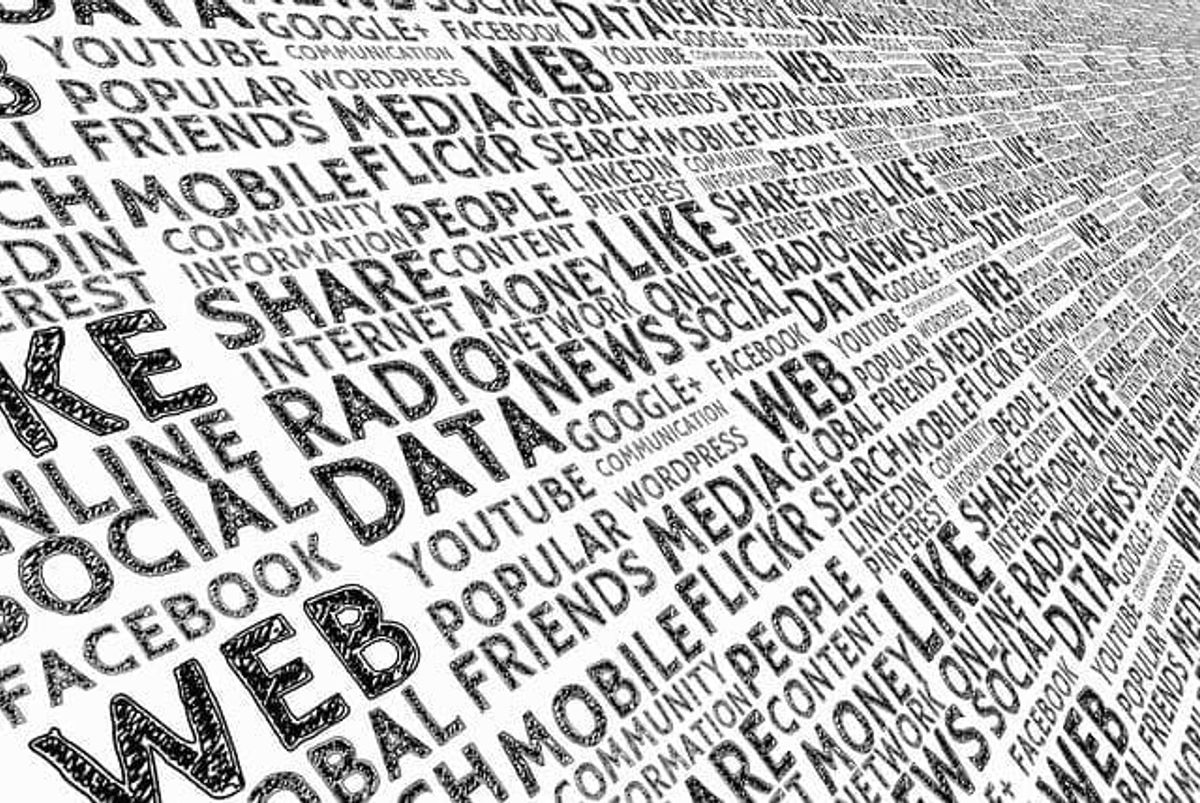Integrated Marketing Communications for Brand Success

Ever wonder how some brands seem to be everywhere you look, always delivering the same message?
Quick Summary
Integrated Marketing Communications (IMC) is a strategic approach that ensures unified brand messaging across diverse channels like social media, print, and digital advertising. By focusing on consistency, coordination, and a customer-centric strategy, IMC not only strengthens brand recognition but also enhances the customer experience. Effectively implemented, IMC builds relationships and loyalty, providing a competitive edge. Ultimately, a cohesive marketing strategy is essential for driving e
It's the magic of Integrated Marketing Communications (IMC) at work.
What Exactly Is Integrated Marketing Communications?

Integrated Marketing Communications, or IMC, is more than just a buzzword in the marketing world. It's a strategic approach that integrates various marketing communication methods to ensure a cohesive message across all marketing channels.
Ready to Grow Your Business?
Get a free consultation and custom strategy tailored to your goals.
Whether you're using social media marketing, print advertisements, or digital advertising, IMC ensures that your brand messaging remains unified and coherent.
At its core, IMC is about coordination. It brings together different marketing strategies and tools—like public relations, direct marketing, and content marketing—to work in harmony. This integrated marketing approach not only enhances your brand identity but also improves the customer decision-making process by providing a seamless experience across multiple platforms.
Key Aspects of IMC:
- Consistency: Delivering the same messaging across all the channels ensures that your audience receives a unified brand experience.
- Coordination: Aligning your marketing team members and marketing efforts to work towards common objectives.
- Customer-Centric: Focusing on consumer behavior and tailoring messages to engage consumers effectively.
By integrating your marketing communications, you're not just sending out advertising messages; you're building relationships with prospective customers and fostering customer loyalty. This comprehensive marketing strategy can give you a competitive advantage in today's crowded marketplace.
Why Should You Care About IMC?

In an era where consumers are bombarded with information from various channels, having a consistent message is more important than ever. Integrated Marketing Communications helps you cut through the noise by ensuring that your marketing campaigns deliver the same messaging, whether they're on social media channels, TV ads, or print advertisements.
Benefits of IMC:
- Enhanced Brand Recognition: Consistent messaging across different marketing channels can strengthen brand recognition and brand loyalty.
- Improved Campaign Success: Integrated marketing campaigns can be more effective because they deliver a unified message, increasing the likelihood of campaign success.
- Efficient Use of Resources: By coordinating your marketing activities, you avoid duplication of efforts and make better use of your marketing budget.
Moreover, an integrated communications strategy allows you to better understand and influence consumer behavior. By analyzing customer data from various channels, you can customize your strategies to meet the requirements of your target audiences.
Real-World Impact:
Companies that employ an integrated marketing communications plan often see higher returns on investment. Their marketing efforts can be more cohesive, leading to better engagement with target customers and ultimately driving sales.
Key Components of Integrated Marketing Communications

To effectively implement IMC, it's essential to understand its core components. Everything you include should work together to get your message across and fit into your overall marketing plan.
Advertising
Advertising is the most visible aspect of your marketing efforts. It includes TV ads, digital advertising on search engines, and print advertisements in magazines and newspapers. Advertising aims to reach a broad audience and create awareness about your products or services.
Tips:
- Use the same visual elements and taglines across all advertisements to maintain brand identity.
- Make sure that your advertising messages are consistent with your overall marketing communication.
Public Relations
Public relations is about creating and upholding a favorable perception of your brand. This involves media relations, press releases, and events that generate publicity.
Tips:
- Coordinate PR activities with other marketing campaigns to reinforce your consistent messaging.
- Utilize PR to highlight your brand's values and mission, contributing to brand loyalty.
Sales Promotion
Sales promotions are short-term incentives to encourage purchases, such as discounts, coupons, and contests.
Tips:
- Align promotions with marketing campaigns to maximize impact.
- Use customer data to personalize promotions for different market segments.
Direct Marketing
Direct marketing is all about getting in touch with customers using mail, email, or SMS to have more personalized communication.
Tips:
- Use customer data to tailor messages that resonate.
- Integrate direct marketing efforts with other channels for a seamless customer experience.
Digital Marketing
Digital marketing encompasses all online efforts, including social media marketing, content marketing, and email campaigns.
Tips:
- Use social media channels to engage consumers and encourage user-generated content.
- Ensure that digital marketing messages are consistent with offline marketing activities.
By integrating these components, marketers combine various tools to create a unified voice. This strategic approach not only enhances campaign success but also builds a strong foundation for long-term customer relationships.
Crafting Your Integrated Marketing Communications Plan

Creating an effective IMC plan involves careful planning and coordination among all marketing team members.
Here's a step-by-step guide to help you develop a comprehensive marketing strategy.
Understand Your Target Audience
Before effectively communicating, understand your target audience through thorough market research.
Actions to consider:
- Analyze customer data to spot trends and preferences.
- Create buyer personas to represent segments of your audience.
Define Clear Marketing Objectives
Make sure to set clear and measurable goals for your integrated marketing campaign. Whether it's increasing brand recognition, boosting sales, or enhancing customer loyalty, clear objectives will guide your marketing efforts.
Actions to consider:
- Use the SMART criteria to define your goals.
- Align objectives with overall business goals for a cohesive strategy.
Choose the Right Marketing Channels
Not all marketing channels will be effective for your brand or your audience. Select the channels that most likely will reach your target customers.
Actions to consider:
- Determine where your target audience spends their time—social media platforms, magazines, TV, etc.
- Consider both digital marketing channels and traditional media for a balanced approach.
The Perks of an Integrated Marketing Approach
Implementing integrated marketing has a bunch of benefits that can really boost your brand's presence and effectiveness in the market. Let's check out the key advantages you can expect.
Improved Customer Loyalty
When your marketing communication is consistent and resonates with your audience, it fosters trust and reliability. Clients can be more likely to be loyal to a brand when it maintains a consistent message across all marketing channels.
This consistency in messaging reinforces your brand identity and assures customers that they can expect the same quality and values every time they interact with you.
How It Helps:
- Builds Trust: Consistent messaging makes your brand appear more professional and trustworthy.
- Enhances Customer Experience: A seamless experience across multiple platforms keeps customers engaged and satisfied.
- Encourages Repeating Business: Happy customers are more likely to come back and buy again, which helps to build customer loyalty.
Enhanced Brand Recognition
Integrated marketing communications ensure that your brand messaging is uniform across all channels, making it easier for consumers to recognize and remember you. This consistent exposure can strengthen brand recognition and help your brand stand out.
How It Helps:
- Memorable Branding: Repeated exposure to the same messaging and visuals makes your brand more memorable.
- Competitive Advantage: A strong identity gives you an edge over competitors who may have fragmented messaging.
- Broader Reach: By utilizing various channels with the same message, you reach a wider audience without diluting your brand.
Better Campaign Success Rates
When all elements of your marketing campaigns are aligned, they work synergistically, amplifying each other's impact. This integrated effort leads to higher campaign success rates compared to isolated marketing activities.
How It Helps:
- Increased Engagement: Unified campaigns are more likely to engage consumers effectively.
- Higher ROI: Coordinated efforts reduce waste and increase the efficiency of your marketing budget.
- Clear Metrics: Integrated campaigns make it easier to track performance across different marketing channels.
Ready to Grow Your Business?
Get a free consultation and custom strategy tailored to your goals.
Hurdles You Might Face

While the benefits are substantial, implementing an integrated marketing communications plan isn't without challenges. Being aware of these hurdles can help you prepare and navigate them more effectively.
Coordinating Across Multiple Teams
One of the biggest challenges is ensuring that all marketing team members, from content creators to brand managers, are on the same page. Misalignment can lead to inconsistent messaging and dilute your brand identity.
Solutions:
- Regular Meetings: Hold frequent meetings to align objectives and update team members on progress.
- Unified Communication Tools: Use platforms that allow for seamless communication and collaboration.
- Clear Guidelines: Develop a comprehensive marketing plan that outlines the strategic approach and individual responsibilities.
Managing Consistent Messaging
Maintaining a consistent message across various channels and multiple platforms can be tricky. Different teams might interpret the brand messaging differently, leading to inconsistencies.
Solutions:
- Brand Messaging Guide: Create a detailed guide that outlines your brand voice, messaging, and visual elements.
- Training Sessions: Conduct workshops to educate team members about the importance of consistent messaging.
- Approval Processes: Implement a review system to ensure all marketing communications meet the set standards before release.
Budget Constraints
Allocating resources across various marketing channels can strain your budget. Balancing between digital marketing efforts and traditional media requires careful planning.
Solutions:
- Prioritize Channels: Focus on the marketing channels that offer the highest return on investment.
- Cost-Effective Strategies: Utilize user-generated content and social media marketing, which can be more budget-friendly.
- Monitor and Adjust: Make sure to keep an eye on how your campaigns are doing and move around resources as needed.
Tips for Successful Integrated Marketing Campaigns

To maximize the effectiveness of your integrated marketing communications, consider these actionable tips.
Align Your Marketing Team Members
Success in IMC relies heavily on teamwork. Ensure that every member understands the overall goals and their specific roles in achieving them.
Actions to consider:
- Collaborative Tools: Consider using project management software to keep everyone updated.
- Shared Metrics: Consider establishing common KPIs so all teams are working towards the same objectives.
- Open Communication: Encourage feedback and ideas from all team members to foster a collaborative environment.
Leverage Social Media Channels
Social media is a strong tool for amplifying your marketing efforts. It allows you to engage consumers directly and spread your consistent message rapidly.
Actions to consider:
- Platform Selection: Choose social media channels that are most popular with your target audience.
- Content Calendar: Plan your posts to ensure consistency and relevance.
- Engagement: Keep up with comments and messages to connect with potential customers.
Utilize Customer Data for Personalization
Personalized marketing communication can significantly enhance customer engagement and loyalty.
Actions to consider:
- Data Collection: Use tools to gather customer data from various touchpoints.
- Segmentation: Divide based on audience behavior, preferences, or demographics.
- Tailored Messaging: Customize your marketing communication to address the specific needs of each segment.
Incorporate Content Marketing
Content marketing is an effective way to provide value to your customers while promoting your brand.
Actions to consider:
- Quality Content: Create informative and engaging content that addresses your audience's pain points.
- SEO Optimization: Use keywords like "integrated marketing communications" and "marketing strategies" to improve search rankings.
- Distribution: Share your content across multiple platforms to reach a wider audience.
The Role of Technology in IMC

Technology is a catalyst that can streamline your integrated marketing communications plan, making it more efficient and effective.
Digital Marketing Channels
Digital platforms offer numerous avenues to reach and engage with your target audience.
Tools:
- Email Marketing Software: For personalized direct marketing campaigns.
- Social Media Management Tools: Manage your social media posts and track engagement across all channels.
- SEO Tools: Optimize your content for better visibility on search engines.
Customer Relationship Management (CRM) Systems
CRM systems help you manage customer interactions and data throughout the customer lifecycle.
Benefits:
- Data Centralization: Keep all customer data in one place for easy access and analysis.
- Enhanced Personalization: Use insights to tailor marketing communication methods.
- Improved Customer Service: Track customer interactions to provide timely and effective support.
Marketing Automation
Automation tools can handle repetitive tasks, allowing your teams to focus on strategy and creativity.
Advantages:
- Efficiency: Automate email campaigns, social media posts, and even some aspects of content marketing.
- Consistency: Ensure that your marketing activities are executed on schedule across all the channels.
- Analytics: Gather data to assess the performance of automated campaigns.
Ready to Grow Your Business?
Get a free consultation and custom strategy tailored to your goals.
Measuring Your Success

Evaluating the effectiveness of your integrated marketing campaigns is crucial for continuous improvement.
Key Performance Indicators (KPIs)
Select KPIs that align with your marketing objectives to measure success accurately.
Examples:
Engagement Metrics: Likes, shares, and comments on social media.
Conversion Rates: The % of potential customers who complete a desired action.
Customer Acquisition Cost: The cost of getting a new customer through marketing efforts.
Feedback Loops
Customer feedback gives valuable insights into what's working and what's not.
Methods:
- Surveys: Collect quantitative data on customer satisfaction.
- Focus Groups: Gain qualitative insights into consumer behavior and perceptions.
- Online Reviews: Monitor reviews to identify areas for improvement.
Analytics Tools
Use analytics to track and analyze data from various marketing channels.
Tools:
- Google Analytics: For site traffic and user behavior.
- Social Media Analytics: Built-in tools on platforms like Facebook and Instagram.
- CRM Analytics: Assess how well your communication strategy is working and how engaged your customers are.
Don't Forget Traditional Media

While digital marketing is essential, traditional media still holds significant value in an integrated communications strategy.
Print Advertisements and TV Ads
These channels can reach audiences that digital platforms might miss.
Strategies:
- Consistent Branding: Ensure that traditional media advertisements align with your digital messaging.
- Strategic Placement: Consider placing ads in publications or TV slots that your target audience is likely to engage with.
Public Relations and Mass Media
Leveraging mass media through PR can amplify your message and enhance brand recognition.
Actions to consider:
- Press Releases: Announce new products, services, or company milestones.
- Media Relations: Build relationships with journalists and influencers who can help spread your message.
- Events: Host or sponsor events to gain media coverage and engage with customers directly.
The Human Element

At the heart of integrated marketing communications is a deep understanding of people—both your customers and your team.
Understanding Consumer Behavior
Knowing how consumers make decisions helps you tailor your marketing strategies effectively.
Focus Areas:
- Customer Journey Mapping: Understand the steps customers take from awareness to purchase.
- Emotional Triggers: Identify what motivates your target audience to take action.
- Cultural Sensitivity: Be mindful of cultural nuances that could impact the reception of your message.
Building Customer Relationships
Building strong connections with your clients can result in increased customer loyalty and advocacy.
Approaches:
- Engagement: Interact with customers through social media, email, and events.
- Personalization: Use customer data to make interactions more relevant.
- Customer Service: Provide exceptional service to enhance customer satisfaction and loyalty.
Empowering Your Team
Your marketing teams are the backbone of your IMC efforts.
Actions to consider:
- Training: Invest in training to keep skills sharp and knowledge up-to-date.
- Collaboration: Promote a culture of collaboration between departments.
- Recognition: Acknowledge and reward the contributions of team members to keep morale high.
Bringing It All Together

Integrated Marketing Communications is not a one-time effort but an ongoing process of alignment and optimization. By combining various marketing communication methods and ensuring they work in harmony, you can create a powerful force that can significantly boost your brand's success.
Key Takeaways:
- Unified Messaging: Consistency across all marketing channels strengthens your brand identity.
- Strategic Coordination: Aligning your marketing strategies maximizes efficiency and impact.
- Customer Focus: Keeping the target audience at the center of your efforts enhances engagement and loyalty.
The goal is to deliver a seamless and cohesive experience to your customers, no matter how or where they interact with your brand. This strategic approach not only benefits your customers but also provides measurable results that can drive your business forward.
Final Thoughts

Implementing an integrated marketing communications plan may seem complex, but the rewards far outweigh the challenges. By fostering collaboration among your marketing team members, leveraging technology, and maintaining a consistent message, you can set the stage for sustainable success.
Actions to consider:
- Assess Your Current Strategies: Evaluate how integrated your current marketing efforts are.
- Plan and Align: Develop a comprehensive marketing plan that brings together all elements of your marketing communication.
- Execute and Monitor: Implement your plan while continuously monitoring performance and making necessary adjustments.
Every brand is unique, so tailor these guidelines to fit your specific needs and market conditions. The key is to stay adaptable and keep your target customers at the forefront of all your marketing activities.
Ready to Grow Your Business?
Get a free consultation and custom strategy tailored to your goals.